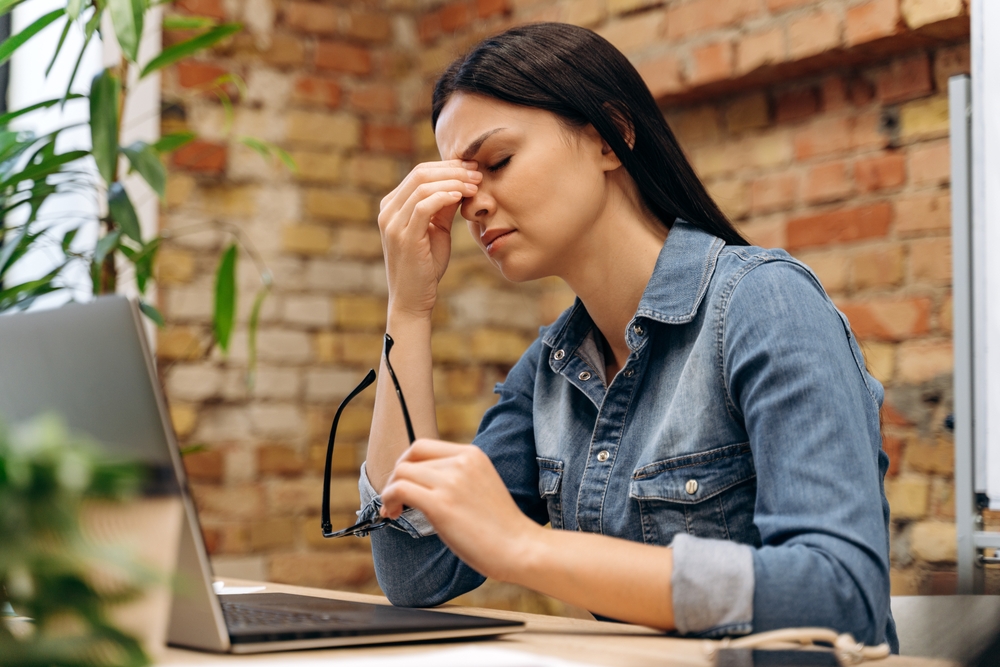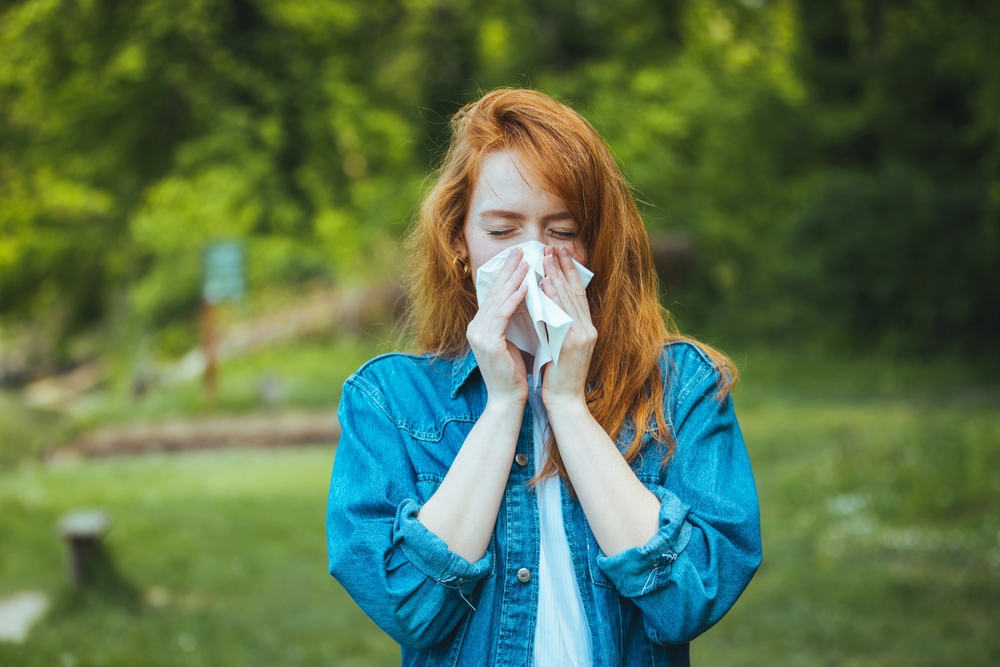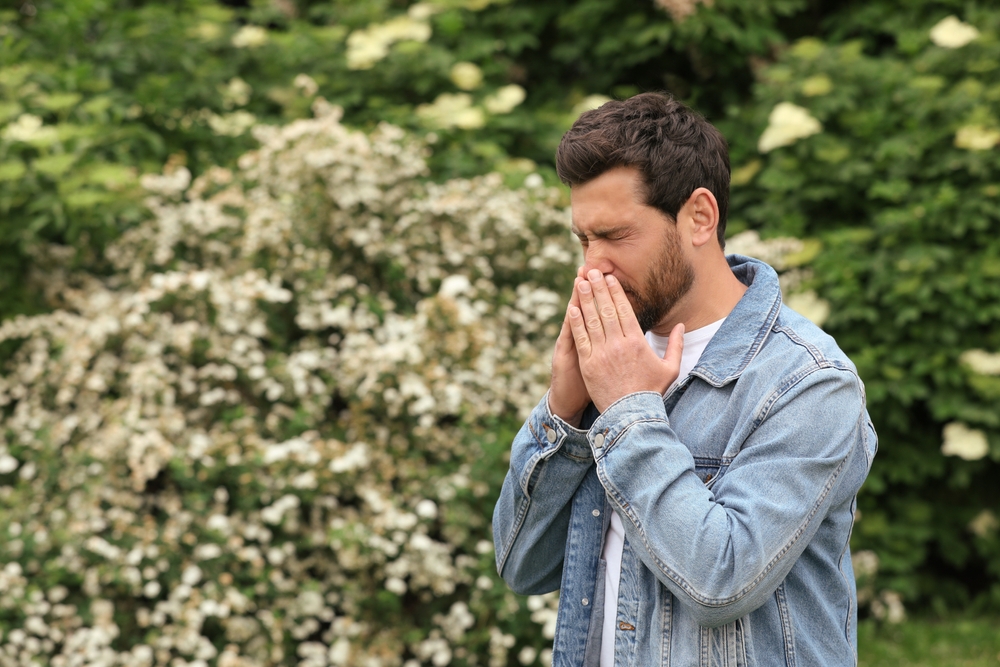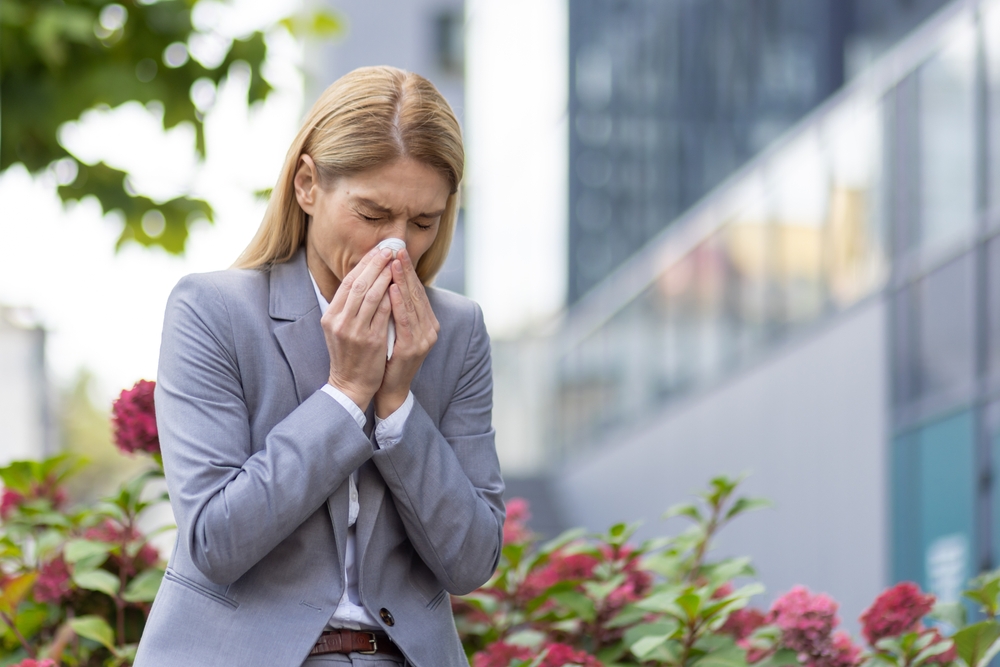
Indianapolis is a great place to live, boasting a bustling downtown area, numerous green spaces, and a reputation for friendly communities. It offers easy access to modern amenities and a safe environment, contributing to its charm. However, many residents can find themselves struggling with rhinitis during certain seasons or year-round.
Keep reading to learn more about four common causes of rhinitis in Indianapolis.
What is Rhinitis?
Rhinitis is the swelling and inflammation of the mucous membrane of the nose. There are different types of rhinitis, including:
Allergic Rhinitis

Allergic rhinitis is caused by substances known as allergens. These substances are usually harmless to most people and include pollen, mold, pet dander, and dust mites.
When you inhale or come into contact with an allergen, your immune system perceives it as a threat and overreacts, triggering a chain reaction to eliminate the perceived danger. It marks an allergen, such as pollen, as harmful and produces allergen-specific antibodies called Immunoglobulin E (IgE).
The next time you’re exposed to the allergen, your immune system produces the same IgE antibodies. These antibodies attach themselves to the allergen and mast cells. They then instruct mast cells to release histamine and other chemicals to get rid of the invader (allergen).
Histamine causes allergy symptoms such as:
- A runny nose
- Sneezing
- Post-nasal drip
- Stuffiness
- Itchy eyes, throat, or nose
Allergic rhinitis can be seasonal or perennial:
- Seasonal allergic rhinitis occurs during certain times of the year, such as summer, fall, and spring, and is caused by pollen from trees, weeds, and grasses.
- Perennial allergic rhinitis happens year-round. It’s caused by allergens that are present throughout the year, including animal dander, mold, dust mites, and cockroach debris.
You can have perennial, seasonal, or both types of allergic rhinitis.
Non-Allergic Rhinitis
Non-allergic rhinitis is a type of rhinitis that isn’t caused by allergens. It happens when the tiny blood vessels in the mucous membrane lining your nose expand.
This can lead to the swelling and inflammation of the mucous membrane, increased mucus production, and congestion. While non-allergic rhinitis has no apparent cause, it can be triggered by:
- Weather changes
- Strong odors like cleaning products and perfumes
- Drinks and foods such as alcohol, and spicy or hot foods
- Air pollution, dust, cigarette smoke, and other airborne irritants
- Hormonal changes due to birth control use, periods, or pregnancy
- Certain medications, such as sedatives, ibuprofen, aspirin, beta-blockers, and nasal decongestant sprays
Non-allergic rhinitis can cause year-round symptoms, including:
- A runny nose
- Congestion
- Sneezing
- Post-nasal drip
- Nasal pain or pressure
Unlike allergic rhinitis, non-allergic rhinitis doesn’t cause itchy eyes, nose, or throat.
What are the Common Causes of Rhinitis in Indianapolis?
Indiana rhinitis causes include:
1. Pollen

Indianapolis is home to different types of pollen. The main types include pollen from grasses, trees, and weeds.
Pollen from grasses is prevalent in late summer and spring. Grasses like Ryegrass, Bermuda grass, and Kentucky bluegrass release large amounts of pollen in the area.
In springtime, tree pollen becomes a major allergen. Trees such as pine, oak, birch, cedar, and maple are common pollen sources in this region.
During late summer and fall, weed pollen is a significant allergen. Common weeds in Indianapolis include ragweed, nettle, lamb’s quarters, and plantain.
What Can You Do
Clean and vacuum your home frequently, and use HEPA filters to reduce pollen indoors. Also, shower and change into fresh clothes after being outdoors to remove any pollen that may be clinging to your hair and skin.
Additionally, keep an eye on the pollen forecast in your area. When the pollen count is high, remain indoors as much as possible and shut your windows and doors.
2. Mold Spores
Mold spores are small, lightweight particles released into the air by various kinds of fungi, including mold. Mold can flourish in any season and environment.
As a result, mold spores can cause allergic rhinitis flare-ups regardless of the time of year. Mold multiplies in warm, damp indoor spaces.
Mold spores thrive outdoors, too, and spread easily during the peak of rainy months and summer in Indianapolis. They can also be more widespread in the fall when leaves fall and offer organic material for mold to reproduce quickly.
What Can You Do
To reduce indoor mold, clean moldy areas and fix any leaks promptly. Ensure your doors and windows are closed on windy days to reduce the entry of outdoor mold spores.
Use exhaust fans in damp areas, like your kitchen and bathroom, to get rid of moist air from your home.
3. Dust Mites
Dust mites are microscopic pests found in homes. These troublesome allergens feed on dead skin cells and thrive in warm, humid climates, making Indianapolis a conducive habitat.
Dust mites grow and multiply when the humidity levels are above 50 percent. They love mattresses, bedding, carpets, upholstered furniture, and curtains, and can cause persistent allergies.
What Can You Do
You can decrease the duration and severity of your allergies by dusting using a microfiber cloth and vacuuming once or twice a week to cut down on dust. Ensure your vacuum has an air filter to trap dust.
Have your carpets cleaned frequently. Wash bedding in hot water every week and invest in allergen-proof pillow and mattress covers.
Using a dehumidifier to keep humidity levels below 50 percent can also help reduce dust mites.
4. Air Pollution

Indianapolis ranks high in air pollution. Industrial emissions, vehicles, construction sites, fuel combustion, and wildfire smoke all contribute to air pollution.
These sources emit toxic substances into the air, including smog and particulate matter. So, whether you live in the bustling city, the quiet countryside, or the outskirts of Indianapolis, it’s hard to escape air pollution.
For allergy sufferers, this can mean constant exposure to the offending allergens and lingering allergy symptoms.
What Can You Do?
To minimize your exposure to air pollution, monitor the air quality in your area and limit your time outdoors when it is smoggy. If there are wildfires or a smog alert, stay indoors and keep your windows and doors closed.
Avoid walking or running in high-traffic areas whenever possible.
Additionally, use an air purifier at home to filter smoke and other airborne contaminants.
When Should You See an ENT Doctor?
Sometimes, limiting your exposure to local allergy triggers and at-home remedies may not eliminate your symptoms. When that’s the case, you should see an ENT specialist.
They can determine the root cause of your rhinitis and provide a more effective solution to bring you lasting relief.
Nip Rhinitis in the Bud
No matter where you live in Indianapolis, rhinitis symptoms don’t have to run your life. Our ENT specialists can determine the underlying cause of your rhinitis and develop a personalized treatment plan to alleviate your symptoms, help you breathe easier, and enhance your overall quality of life.
Are your rhinitis symptoms severe, chronic, or interfering with daily activities? Schedule your appointment at Southern Indiana ENT in Indianapolis, IN, today to get on the path to finding long-term relief.

